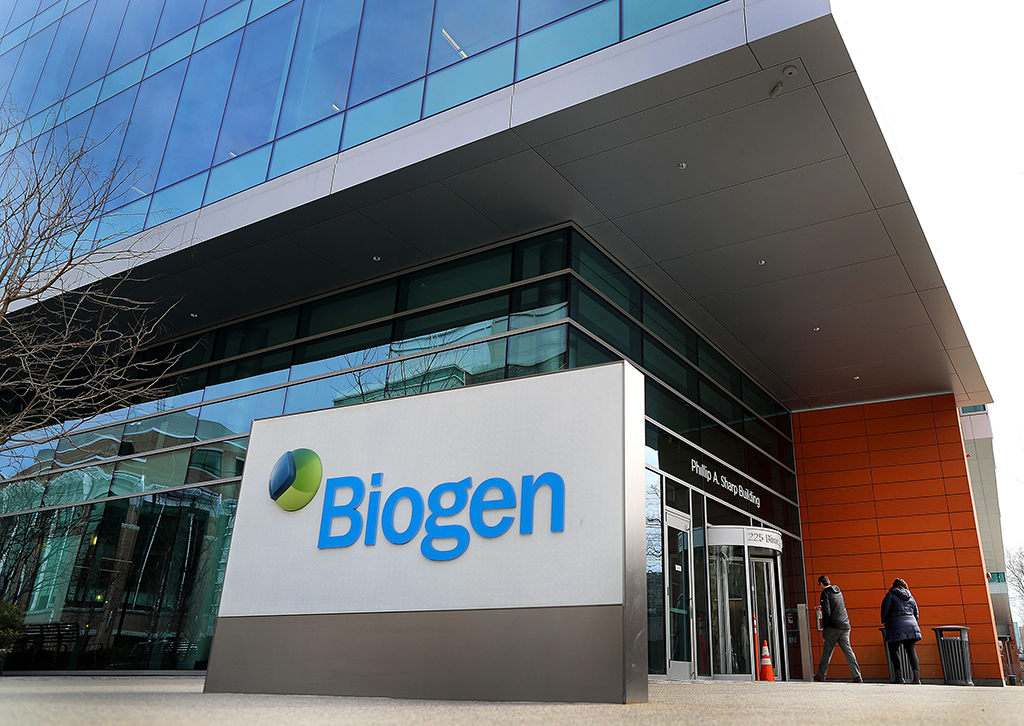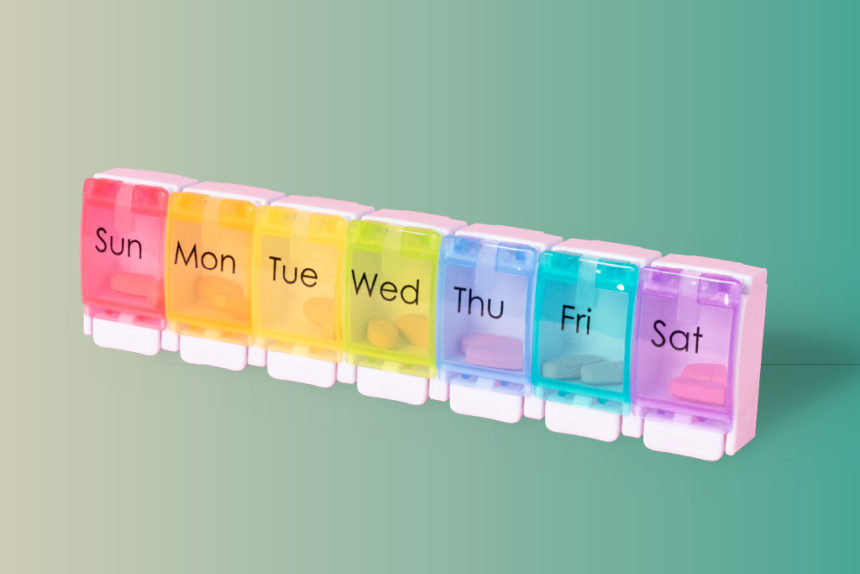Lecanemab may be shaping up to be the second treatment approved by the Food and Drug Administration for Alzheimer’s disease in the last two decades. Yet it’s a near clone of Aduhelm (aducanumab), a drug of uncertain clinical benefit which some called the worst pharma launch in history.
At least, that’s what we know so far from a recent phase 3 study released by co-developers Biogen and Eisai. So, why were the data hailed in so many quarters this week?
Known as CLARITY-AD, the study enrolled 1,795 patients with mild cognitive impairment caused by Alzheimer’s disease or early-stage Alzheimer’s. Lecanemab, an IV infusion med, removes abnormal clumps of amyloid beta, proteins that are typically the disease’s hallmark.
In a partial data readout via press release Tuesday, Biogen and Eisai said that at 18 months, subjects in the study were better off on the drug than on placebo, showing a nearly half-point (0.45) change in score on a major outcome measure known as clinical dementia rating-sum of boxes, or CDR-SB.
That difference amounted to a 27% change, which proved statistically significant. The two pharma companies also reported that lecanemab met its secondary goals of reducing toxic plaques within the brain and slowing the decline of three other measures of memory and function.
Eisai CEO Ivan Cheung, who also serves as global head of its Alzheimer’s unit, characterized the lecanemab results as “very clinically meaningful,” but added, “There are different opinions out there on defining what clinical meaningfulness is for this stage of the disease.”
The findings from the closely watched trial led to headlines declaring that lecanemab “slowed the rate of decline” by 27%. They took investors by surprise, boosting the stock prices of Eisai, which closed up 17% in Japan Wednesday, and Biogen, whose shares rose 40% on the news. The announcement also appeared to position lecanemab for an accelerated approval on Jan. 6 and maybe even full FDA approval, for which the companies expect to file by the end of March.
Many analysts viewed the lecanemab results as paving the way for two other rival drugs in the same class, as well – Roche’s amyloid beta asset gantenerumab and Eli Lilly’s donanemab – should their data pan out.
The lecanemab results “help de-risk the idea that lowering plaque yields clinical benefit,” wrote Tim Anderson, a Wolfe Research analyst.
But given the many past failures of amyloid drugs, one can forgive clinicians for remaining a bit skeptical of that premise.
“It’s a redux of what we saw last year with aducanumab,” Constantine Lyketsos, M.D., professor of psychiatry and behavioral sciences at the Johns Hopkins University School of Medicine, said of the lecanemab results. “It’s the same benefit, which is very modest.”

But the fact that Eisai believes that a 0.4 difference on the CDR-SB scale is clinically meaningful and that the FDA may be poised to accept that view, “for me is very problematic,” said Lyketsos. He pointed to the extensive research done in the Alzheimer’s research field, setting the bar for a meaningfully important clinical difference at one point or more on that scale.
“The field is saying it needs to be one point or more, not 40% of one point. [Eisai/Biogen] are far away from that one-point delta,” Lyketsos said.
What CLARITY-AD seems to show, so far, is that the 27% finding likely wasn’t due to chance. “That’s all a ‘p-value’ tells you,” he explained. “Is [the datapoint] clinically significant? Not clearly right now. They’re definitely not showing they’re delaying the course of the illness.”
Such discussions are déjà vu for AD experts, who recall that Biogen’s Aduhelm, lecanemab’s infamous amyloid-busting predecessor, was neither clinically meaningful – because it came up short of the 1.0 standard (it also registered a 0.4) – nor statistically significant.
Given the uncertain data, the Centers for Medicare and Medicaid Services limited coverage of the drug to patients enrolled in a Medicare clinical trial, a decision that prevented a large-scale launch among those who would have been the primary patient population.
Lecanemab’s benefit, on the other hand, proved statistically significant thanks to its comparatively large trial cohort, Lyketsos said. But for patients, the distinction between statistically significant and clinically meaningful is more than a theoretical one. Is it actually helpful for the 5.8 million Americans who suffer from this disease?
A minimally important clinical difference is not derived statistically, Lyketsos argued. “It’s derived based on understanding the clinical state of the patient as weighted on this clinical instrument, the CDR-SB.
“There are many examples in medicine where you can, with a large enough study, show a statistical advantage, but doctors come back and say, ‘So what? This doesn’t impress me as being helpful to patients,’” he cautioned.
Lecanemab is “doubtfully meaningful for all patients. It’s probably meaningful for some,” said Lyketsos. He added that he’s looking forward to seeing the full data set to see which of the nearly 1,800 subjects scored a one-point or better benefit, “so we don’t expose this potentially risky and likely very expensive drug to large numbers of people who are likely not going to benefit.”
Eisai is slated to present the full CLARITY-AD study results on November 29 at the Clinical Trials on Alzheimer’s Congress and publish the findings in a peer-reviewed medical journal. The company is modeling for lecanemab yearly pricing of up to $38,000 per patient, according to the Evercore ISI analyst Umer Raffat. That’s particularly relevant since Aduhelm is priced at $28,000 following last December’s 50% price cut, Raffat noted.
Meanwhile, there’s a need to flesh out lecanemab’s long-term safety in larger patient numbers. The rates of brain swelling or brain bleeding, visible on PET imaging, look similar to what was seen in a phase 2 trial. These adverse events were seen in about 21% of all participants, less than 3% of whom were symptomatic.
Lyketsos called that rate “non-negligible,” for the most part, but not clinically significant, either.
“If this is a drug that’s suddenly used by hundreds of thousands or millions of people, you can bet that there will be a significant number of people who have catastrophic strokes from taking the drug,” he speculated. “It’s just that in these studies, it didn’t happen, but when you get into a larger sample size, that will start happening.”
Another outstanding clinical question involves how long people should stay on the drug.
“If you project this out eight or 10 years, which is how long someone with mild cognitive impairment who enrolled in a trial is likely to live, you may be extending how long people will live with severe disease,” he said.
Subjects were still worsening steadily over the course of the study, but those on the drug “worsened less fast,” Lyketsos explained. “So, if without the drug, they would have been severely disabled for six months, now with this drug they may be [that way] for nine months.”
In other words, while there may be an “offset” at the beginning of the drug’s course, “you pay it back years later.”
Like Aduhelm, Lyketsos predicts that lecanemab, donanemab and gantenerumab will all yield similar results: a small benefit clinically with a robust removal of amyloid. Unlike their predecessor, though, the three could well go on to commercial success.
Anderson models lecanemab’s total sales reaching about $900 million. As far as the two other prospects, Roche’s is the next to read out later this year followed by Lilly’s in early 2023. Both could outsell lecanemab if they were to reach the market, though, due in part to their potential for subcutaneous administration and/or the extra marketing muscle of Roche and Lilly, Anderson noted.
He predicted a large uptake during the first few years after the drugs become available, as they work through an initial bolus of patients with existing disease, after which sales decline and then return upon the influx of a new patient pool.
Anderson estimated donanemab will peak at $4.8 billion in sales by 2025, then dip before reaching $2.6 billion by 2032. Meanwhile, he said gantenerumab will peak at 6.9 billion Swiss francs ($7.1 billion) in 2026, then dip before hitting 5.2 billion Swiss francs ($5.3 billion) by 2032.
Of course, those forecasts presuppose that federal reimbursement monies won’t continue to be scarce. CMS’s national coverage decision prevails for the amyloid beta class as a whole, even those monoclonal antibody drugs that secure full approval, until Eisai engages with the agency to walk it back.
Still, the multi-layered situation surrounding Aduhelm was “largely an anomaly,” Anderson wrote. Assuming no similar level of controversy arises with lecanemab and its two main rivals, “the reimbursement floodgates will [eventually] open” and it will become “business as usual,” the analyst predicted.
And what of the much-maligned amyloid beta theory? Should we expect the drugs to rewrite the narrative?
“Not appreciably, because they’re producing as much benefit as was produced by aducanumab clinically,” said Lyketsos. “The narrative for me has been amyloids playing a role, probably for some people more than others. But it’s not the whole story. Both of these drugs [Aduhelm and lacanemab] have shown us that the best they can do is that potentially you’re better off for 18 months, or maybe longer.”
“But you’re still steadily worsening and will still die from this horrible illness,” the clinician said. “That part of the narrative doesn’t change.”







